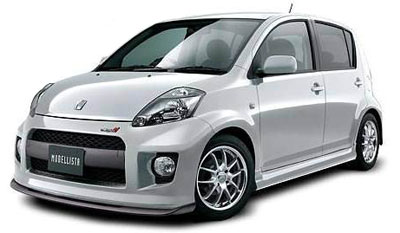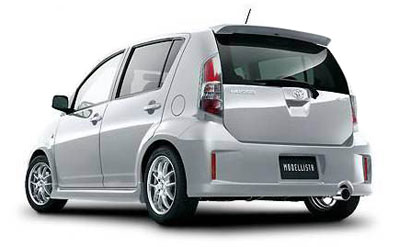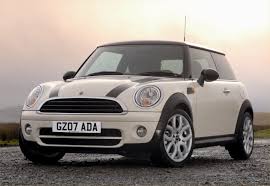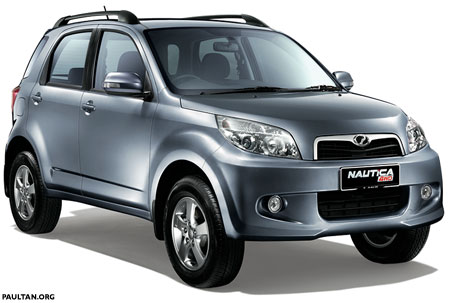IT sells some 7,000 units every month, is relatively cheap and has ample room for five passengers. It has a preppy engine and looks smart. It?s not expensive to maintain and retains its resale value. It?s not surprising therefore that the Perodua Myvi is the best-selling car in the country.
But what the Myvi lacks is decent rear boot space ? which is particularly felt during the balik kampung ride during the festive season, or as the kids in the family grow bigger and bigger.
The Perodua Alza can take up to seven passengers without too much of a squeeze.
Would making a bigger Myvi be a step in the right direction?
Absolutely, say the people at Perodua, who feel they have a found winning formula in the Alza, a multi-purpose vehicle launched on Monday.
Looking much like a stretched, raised and pumped up Myvi, the new MPV has three rows of seats and can seat seven ? its key attraction.
Alza, which is Spanish for ?rise?, is also synonymous with ?amplify, enhance and heighten?. The vehicle is slightly higher than the Myvi and has been stretched by 455mm, Its wheelbase is also longer by 310mm; in fact, it is close to the Toyota Camry ? a good indication of its interior space.
Perodua managing director Datuk Syed Hafiz Syed Abu Bakar says the Alza, with its flexible seating configuration, can be turned into a car with a big boot when you don?t need the extra back seats for seven passengers.
?It?s like Superman. It becomes that when you need it,? Syed Hafiz said at a media preview of the MPV in Putrajaya earlier this month.
The introduction of the Alza is part of the second national carmaker?s dynamic move to offer vehicles that meet current motoring trends.
With the average size of most Malaysian families shrinking to four from six, Syed Hafiz says the majority of its potential customers don?t actually need a huge MPV.
?It just has to be a vehicle with the right amount of interior space. A size that is too large will also make the MPV clumsy and difficult to drive on narrow roads,? he says.
The Alza shares its underpinnings with the Daihatsu Boon Luminas and Toyota Passo Sette seven-seaters. Under the bonnet is a twin camshaft with dynamic variable valve timing (DVVT) 1.5-litre engine code named 3SZ-VE, similar to the type in the Toyota Avanza and Perodua Nautica.
The nifty utility box behind the steering wheel for storing
small items.
Tuned for fuel economy, the Azla?s power is rated at 104bhp at 6,000rpm or five horses short of the Avanza and Nautica?s 109bhp. However, its maximum torque of 136Nm is the same as that of theirs.
?As the Alza is not too heavy at 1.1 tonne, its power-to-weight ratio with a 1.5-litre engine is pretty good,? says Syed Hafiz.
Transmission options are the four-speed automatic and five-speed manual while trim levels are the Standard and Premium. Front and rear brake set-ups are discs and drums, respectively, on both grades.
Front suspension is the MacPherson type while the rear uses the torsion beam with stabiliser bar.
Inside, the Alza comes in grey and light grey, with a centrally located instrument cluster that features a trip computer with readouts of average fuel consumption and how far you can go before the tank empties.
The temperature gauge is missing but the fuel gauge, speedometer and tachometer are still there.
With its higher roofline, the Alza gets more headroom for an airier feel.
The gearshift for the automatic is console-mounted, while that for the manual is located on the floor between the driver and front passenger. This arrangement allows the automatic variant to come with bench-type front seats with a 60:40 split, a feature rarely found in locally available MPVs.
In essence, the front passenger can slide over to the driver?s seat without having to get out of the MPV ? useful when taking over the wheel after dropping someone off.
In our opinion, the third row seats are more suitable for children although adults can squeeze in there.
Sleek, streamlined and downright trendy!
The second row seats are fitted on rails and can slide forward by 150mm to provide more legroom for third row passengers.
What?s more, the three rows of seats can be folded for a flat configuration.
Cup and bottle holders are scattered around the MPV, on the door pockets and armrests.
Although not equipped with air-conditioner vents for the second and third row seats, Perodua claims that the Alza has a more powerful cooling coil and blower fan than the Myvi.
?We have conducted tests and can say that third-row passengers will have enough cool air, even on hot days,? says Perodua Sales Sdn Bhd operation director Ahmad Suhaimi Mohd Anuar.
In addition, the Alza gets all-round ultraviolet protected glass that cuts down UV rays by 91%.
At the media preview, we get to try out both automatic and manual variants at Putrajaya. With four persons on board, performance on an uphill slope is still adequate but one has to remember that this is an MPV, and the engine needs to be revved a bit more.
Once speed has built up, however, little effort is needed to keep the vehicle on the move. The five-speed manual gives us a gutsier performance since the better spaced gear ratios allow for better use of the engine powerband.
The clutch pedal is not heavy and we reckon it won?t tire out our left foot when inching through a traffic jam.
According to Perodua, the Alza with automatic transmission promises a low fuel consumption of 12.7km per litre of petrol or roughly 14 sen per km on RON95 fuel. The manual variant is even more frugal ? 15.5km per litre of fuel.
Available features across the Standard and Premium grades are headlights with projector elements, grille with chrome garnishing, LED tail lights and 185/55/R15 tyres.
The Premium variant has additional features like dual front air bags, anti-lock braking system with electronic brake force distribution and brake assist, fog lights, tail spoiler, audio system with Bluetooth/USB support and leather steering wheel with audio controls.
The trunk comes with a luggage lamp, an item that is sorely lacking in Myvis.
Available colours are solid Ivory White and metallic Medallion Grey, Glittering Silver, Ebony Black and Pearl White. The Premium variant gets the additional metallic Classy Purple.
Prices on the road start at RM56,000 for the Standard manual to RM64,000 for the Premium automatic.
The Advanced variant ? delivery of which starts in March ? will cost RM6,000 over the Premium version and will feature additional goodies such as body kits, leather seats, tinted windows, a satellite navigation system and reverse camera.





























